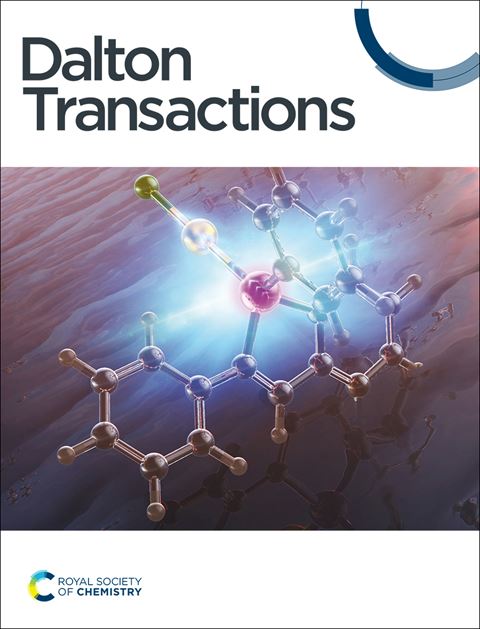High-efficiency oxygen evolution catalysts: composite hexagonal structure SrCo1-yNiyO3-δ/Sr9Ni7O21
IF 3.5
3区 化学
Q2 CHEMISTRY, INORGANIC & NUCLEAR
引用次数: 0
Abstract
Transition metal perovskite oxides are regarded as ideal catalysts for the oxygen evolution reaction (OER) owing to the high tunability of the B-site active elements. Among them, SrCoO3 has been widely studied due to its high theoretical catalytic performance, but incomplete oxidation of the B-site elements results in poor intrinsic activity. Herein, we prepared a series of SrCo1-xNixO3-δ (x = 0-0.5) catalysts for alkaline OER using a simple sol-gel method and optimized their catalytic performance by modulating the Co/Ni ratio and annealing temperature (950 ℃ and 1050 ℃). Among the series, SrCo0.6Ni0.4O3-δ (annealed at 950 ℃) with a composite hexagonal structure (SrCo1-yNiyO3-δ/Sr9Ni7O21, y = 0.1-0.2) exhibited the best OER activity, achieving an overpotential of 321 mV at 10 mA cm-2 (1 M KOH). The introduction of Ni ions and the presence of Sr₉Ni₇O₂₁ not only enhance the Co4+/Co3+ and Ni3+/Ni2+ ratios, but also promote the generation of more highly oxidative oxygen species (O22-/O-). Additionally, the abundant Ni3+ surface facilitates the formation of highly active NiOOH phase during OER, leading to a further reduction in the overpotential (after 1000 CV cycles, the overpotential on the nickel foam electrode decreased by 45 mV).高效析氧催化剂:复合六方结构SrCo1-yNiyO3-δ/Sr9Ni7O21
过渡金属钙钛矿氧化物由于其b位活性元素的高可调性而被认为是析氧反应(OER)的理想催化剂。其中SrCoO3因其较高的理论催化性能而被广泛研究,但b位元素氧化不完全导致其固有活性较差。本文采用简单的溶胶-凝胶法制备了一系列SrCo1-xNixO3-δ (x = 0-0.5)碱性OER催化剂,并通过调节Co/Ni比和退火温度(950℃和1050℃)对其催化性能进行了优化。其中,复合六方结构(SrCo1-yNiyO3-δ/Sr9Ni7O21, y = 0.1 ~ 0.2)的SrCo0.6Ni0.4O3-δ(950℃退火)在10 mA cm-2 (1 M KOH)下的过电位达到321 mV, OER活性最好。Ni离子的引入和Sr₉Ni₇O₂₁的存在不仅提高了Co4+/Co3+和Ni3+/Ni2+的比例,而且还促进了更高氧化性的氧的产生(O22-/O-)。此外,丰富的Ni3+表面有助于在OER过程中形成高活性的NiOOH相,从而进一步降低过电位(经过1000 CV循环后,泡沫镍电极上的过电位降低了45 mV)。
本文章由计算机程序翻译,如有差异,请以英文原文为准。
求助全文
约1分钟内获得全文
求助全文
来源期刊

Dalton Transactions
化学-无机化学与核化学
CiteScore
6.60
自引率
7.50%
发文量
1832
审稿时长
1.5 months
期刊介绍:
Dalton Transactions is a journal for all areas of inorganic chemistry, which encompasses the organometallic, bioinorganic and materials chemistry of the elements, with applications including synthesis, catalysis, energy conversion/storage, electrical devices and medicine. Dalton Transactions welcomes high-quality, original submissions in all of these areas and more, where the advancement of knowledge in inorganic chemistry is significant.
 求助内容:
求助内容: 应助结果提醒方式:
应助结果提醒方式:


